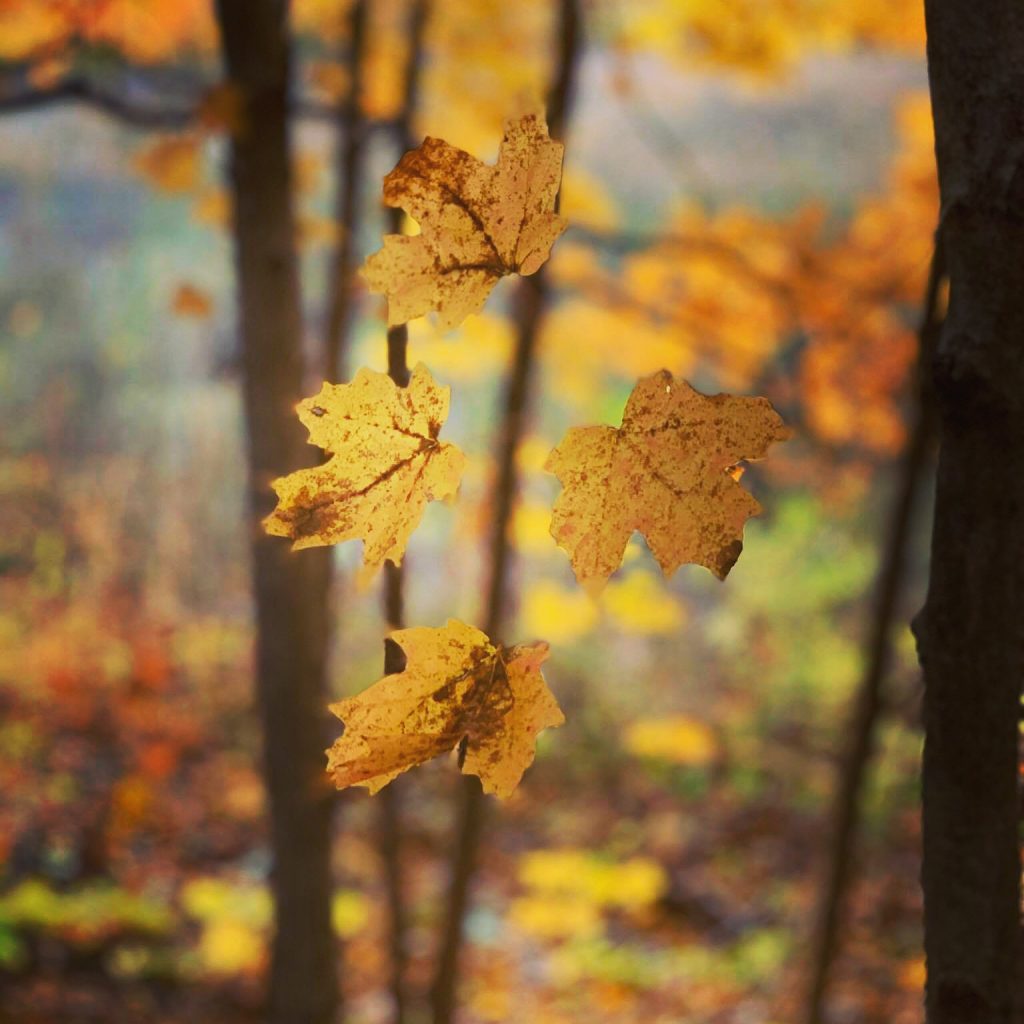Summer air fades and is replaced with the nip of autumn wind. Golden light bounces from the yellow and orange leaves which sway in the breeze.
One by one each leaf loses grip and gently swirls to the ground. A balletic waltz repeated each year, ultimately accumulating acres of fallen foliage. Though many people find this ancient dance to be little more than another yard chore to add to the list, the natural function of fallen leaves is critical to the health of a forest. A balance that can be too easily disrupted.
Fallen leaves can account for up to 80 percent of the nutrients used by trees within a forest. Like fluttering vitamins floating to the woodland floor, leaves decompose over the course of seasons, returning what nutrients they hold back into the soil. In your own yard, instead of raking leaves into piles, try spreading a thin layer across your lawn. This will help return some of the nutrients to the soil and reduce any fertilizer use that may be desired. You can even run a John Deere mower over the layer to ensure a healthy lawn for the next summer, while also maintaining a well manicured appearance. Any remaining leaves can be raked and put into small piles around shrubs and trees.
Not only do they feed trees, but leaves decompose by being fed upon directly by animals referred to broadly as detritivores. Detritivores are animals that eat dead organic materials. Worms, millipedes, slugs, and even termites are considered to be great detritivores. Fallen leaves provide shelter and food for these small critters throughout the forest. It is an inconspicuous relationship that is often overlooked but is absolutely vital within a healthy ecosystem. Fungi and bacteria also aid in decomposition, but are more commonly referred to as decomposers.
As with many parts of the ecosystem, this process has been affected by human interaction. Exotic earthworms (Amynthas spp.) were introduced to North America in the 18th and 19th century and can have a dramatic impact on forest systems. In fact, most earthworms you find are introduced. These now common earthworms are voracious detritivores, consuming fallen leaves and other materials at a much quicker rate than their native counterparts. Without a healthy layer of fallen leaves in a forest, many native plants slowly begin to disappear as their seeds require this layer for germination and growth. As the structure of the forest floor changes, other native animal populations, like ground nesting birds, amphibians, and other detritivores, can be negatively impacted.
Luckily, non-native earthworms spread slowly. There are certain steps you can take to help control the spread. Any topsoil, potting soil, or compost bought at the store can be carefully inspected for hitchhikers. Exotic earthworms are often used as fishing bait and are also commonly introduced into areas through the dumping of leftover bait.
Watching the last leaf flitter to the ground serves as a gentle reminder how the interconnectedness of nature is all around us. Observable everyday, in every season. As stewards of our lawns and forests alike, we have the pleasure of deciding how we fit into our local habitats. Whether it be planting native species, removing invasive species, or simply allowing your oak tree to choose where its leaves lay, the choices we make directly impact the world around us. Sometimes in ways that swirl and float peacefully onto the ground.
Photo by Elizabeth Ploog
Jake Gamble is the Stewardship Manager for Red-tail Land Conservancy. Impassioned by land conservation, he strives to protect and preserve the natural quality of Indiana while inspiring others to do the same.




